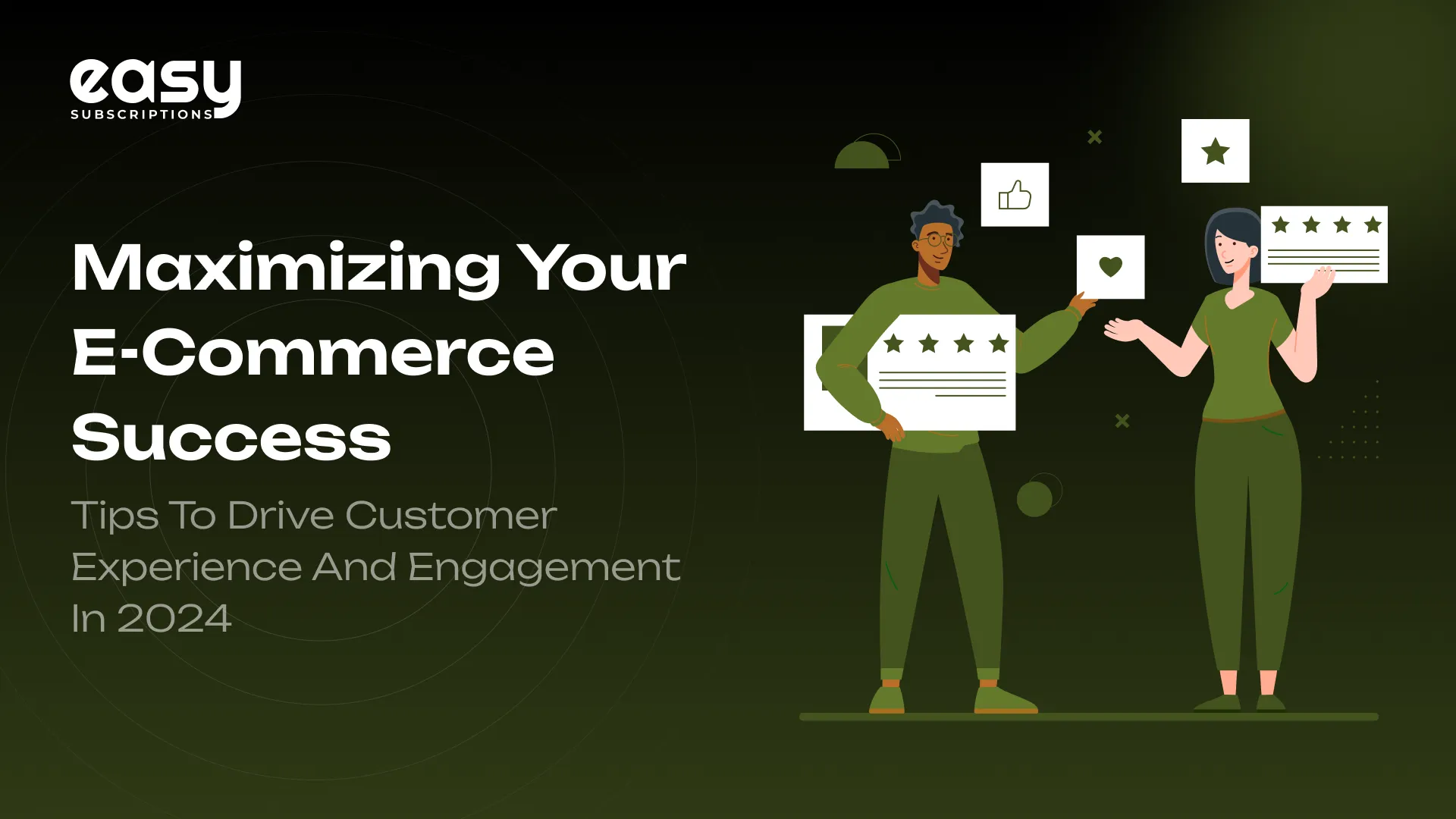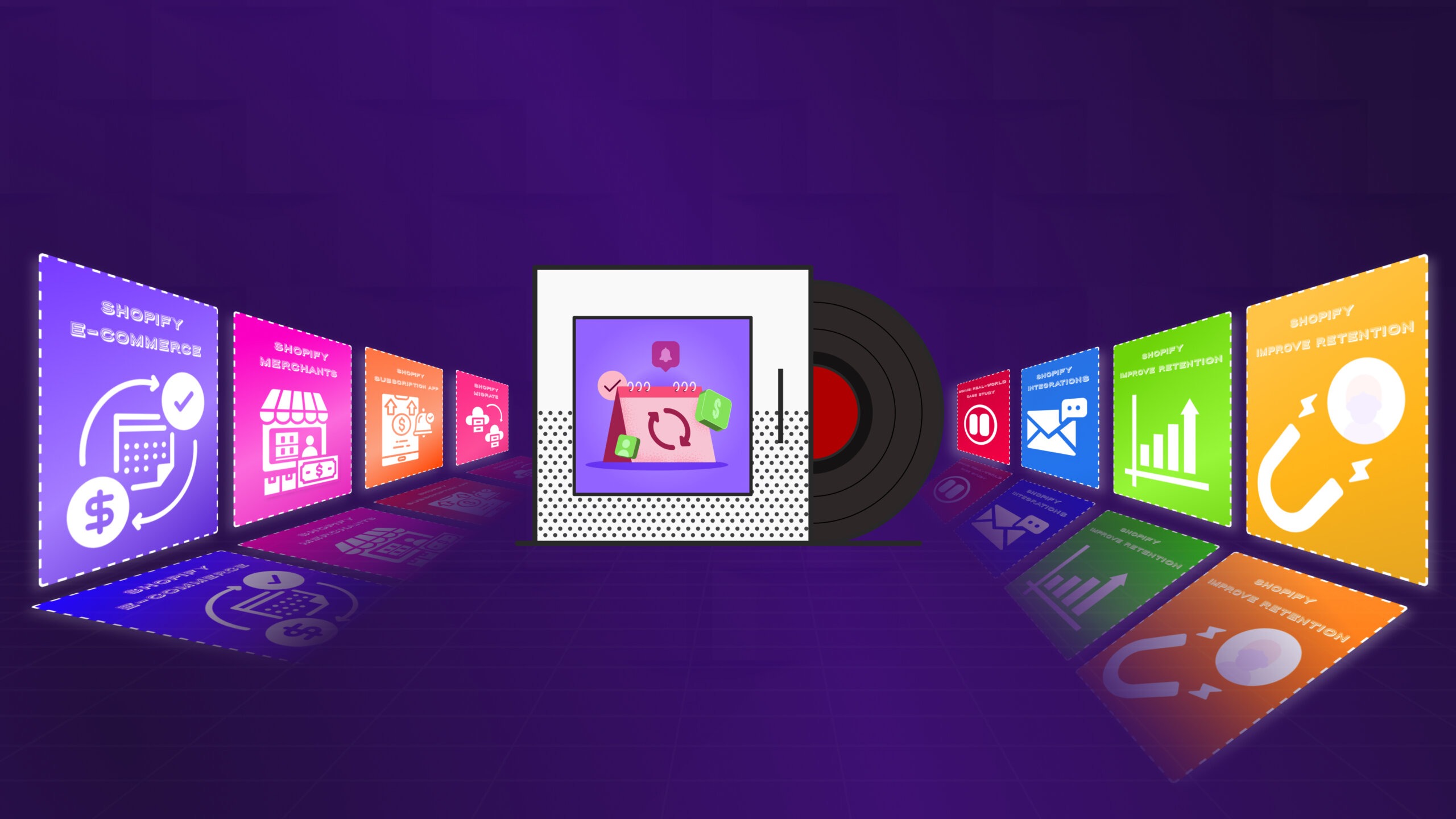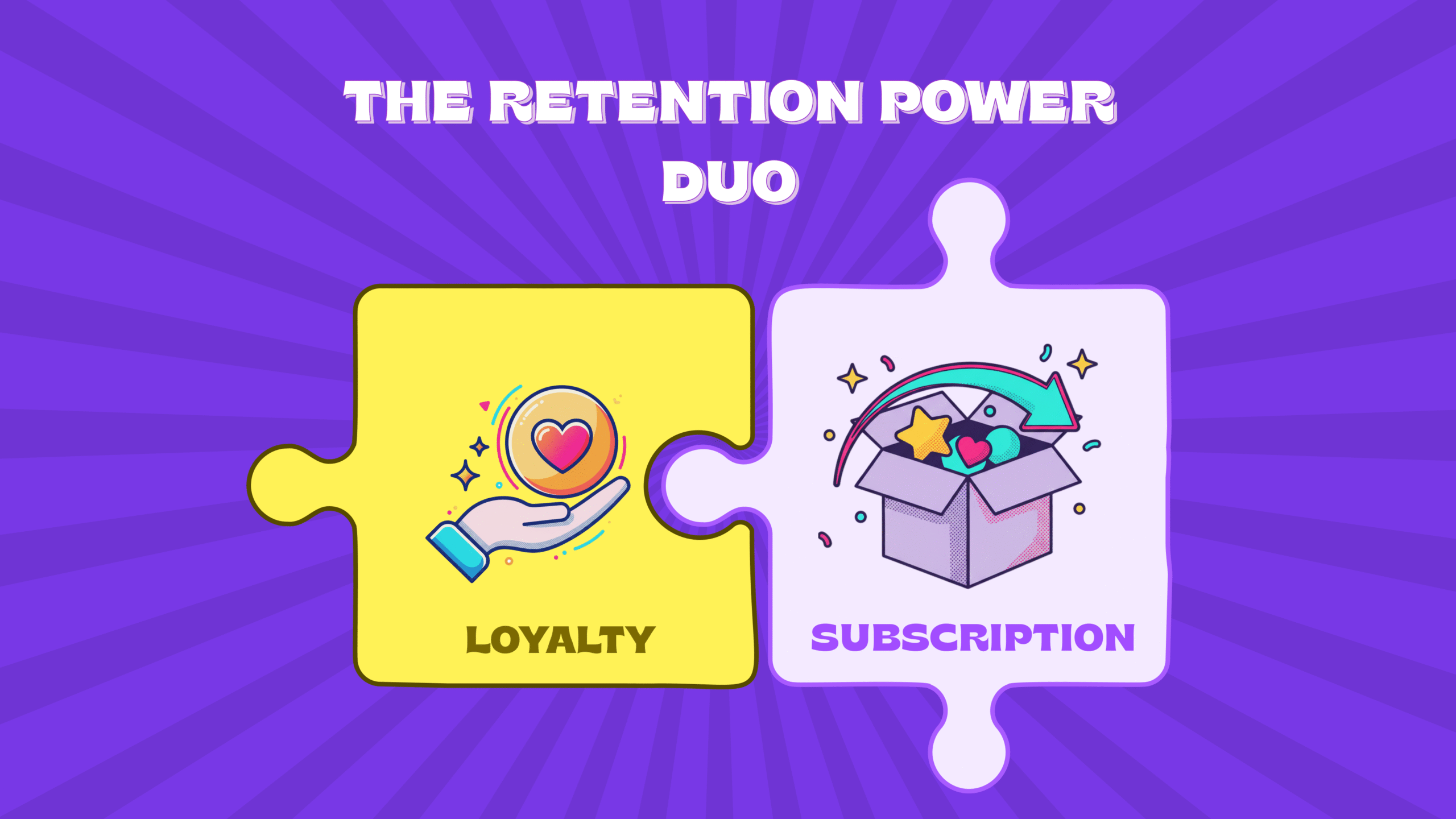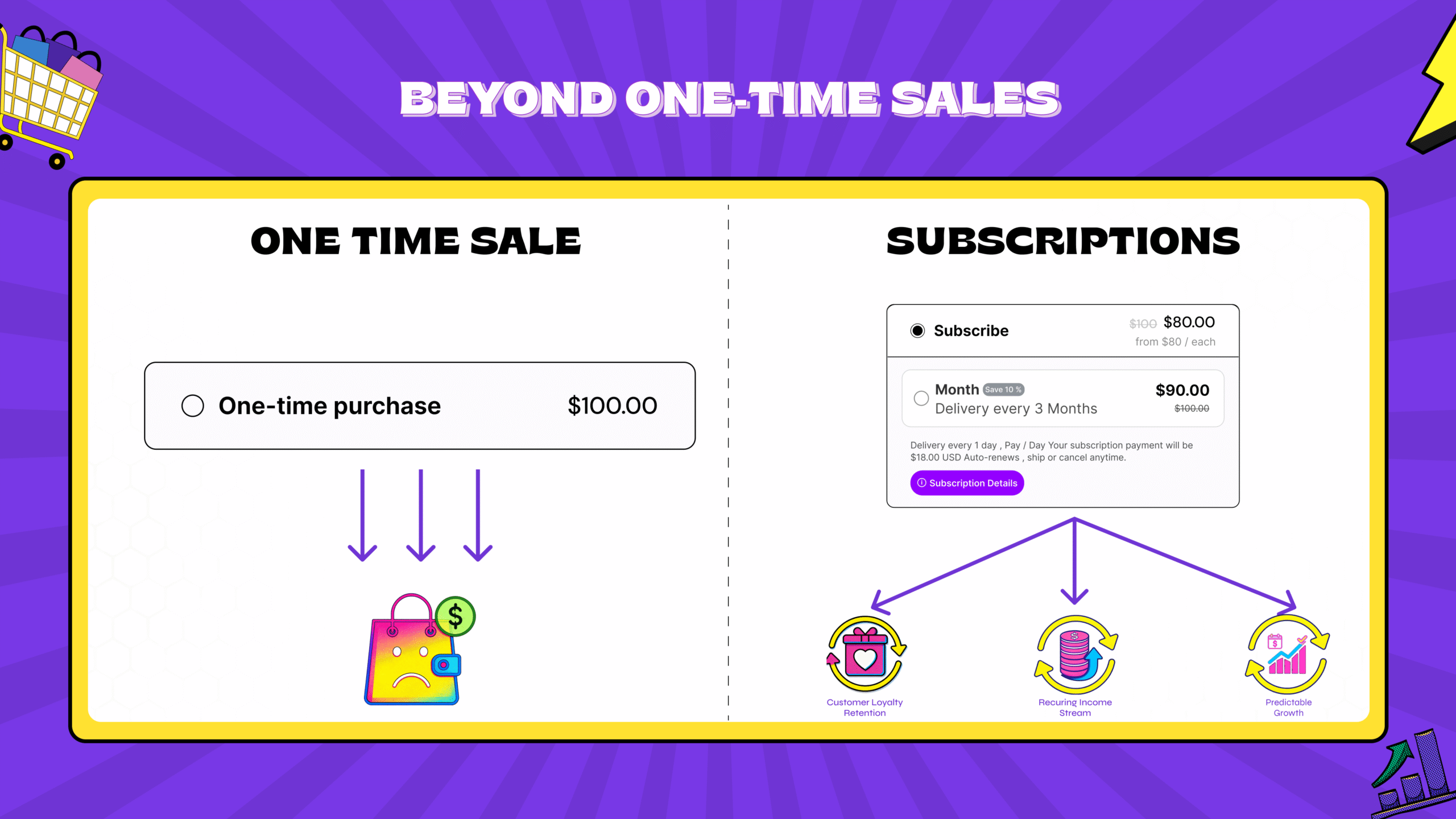
Maximizing Your E-commerce Success: Tips to Drive Customer Experience and Engagement in 2024
Published On: August 29, 2024 - 7 min read
In today’s rapidly evolving e-commerce landscape, the key to success isn’t just offering great products—it’s about creating exceptional customer experiences. The modern shopper expects more than just a transaction; they want a personalized, seamless journey that adds value to their purchase experience.
Building a strong customer experience (CX) can significantly boost brand loyalty, increase customer lifetime value, and even turn your buyers into brand advocates.A well-crafted CX strategy not only enhances customer satisfaction but plays a vital role in maximizing revenue for your business. In this blog, we’ll delve into the concept of customer experience, explore its importance, and share actionable tips to help you create an experience that keeps your customers coming back for more.
On this matter, Gidon Sadovsky, founder of Overnight Glasses, emphasizes: “Understanding individual preferences and delivering tailored solutions is key to building a more engaging and satisfying customer experience. This approach not only enhances immediate satisfaction but also fosters loyalty, transforming one-time buyers into lifelong advocates.”
What is Customer Experience (CX)?
Customer experience encompasses every interaction a customer has with your brand—from the moment they first hear about you to the after-sales support they receive. It is the sum of all touchpoints, including product discovery, customer service, website navigation, and even how your product is packaged and delivered.
A positive customer experience not only satisfies your customers but can also turn them into brand advocates. This, in turn, drives word-of-mouth marketing and enhances your brand’s reputation.
Why Is Customer Experience Important?
Customer experience has a direct impact on your business’s success. Research from McKinsey & Company shows that prioritising CX has become increasingly important, with a 19% increase in focus from 2019 to 2022. Here’s why:
- Improves Customer Retention: A great customer experience fosters loyalty. A May 2022 survey revealed that 94% of customers are more likely to make repeat purchases after a positive experience. Retaining customers is often more cost-effective than acquiring new ones, making CX a key factor in profitability.
- Drives Brand Advocacy: Happy customers become your best marketers. eMarketer found that 84% of customers would recommend a brand after a positive experience. Word-of-mouth marketing is one of the most powerful tools at your disposal.
- Enhances Employee Satisfaction: A positive CX can also improve your team’s morale. When customers are happy, it creates a more pleasant working environment, which boosts employee engagement and productivity.
The Difference Between Customer Experience and Customer Service
It’s essential to distinguish between customer experience and customer service. While the two terms are often used interchangeably, they refer to different aspects of a business:
- Customer Experience (CX): This refers to the entire journey a customer takes with your brand, including pre-purchase interactions, the buying process, and post-purchase support. It encompasses all channels and touchpoints, both online and offline.
- Customer Service: This is a specific component of CX. It deals with providing assistance and resolving issues for customers, usually in response to inquiries or concerns. Customer service is critical, but it’s just one piece of the broader customer experience puzzle.
What Makes a Good Customer Experience?
The definition of a good customer experience can vary depending on your industry and target audience. However, there are a few universal principles that every business should strive to achieve:
- Seamless and Consistent Journeys: Whether online or offline, every interaction should be smooth and easy to navigate. Customers should experience consistency across all channels, whether they’re shopping in-store, on your website, or interacting with customer support.
- Personalization: Customers appreciate when brands tailor experiences to their individual needs, preferences, and behaviours. Personalised offers, product recommendations, and communication help create a connection between the customer and your brand.
- Proactivity: Address customer needs before they become issues. Offering FAQs, self-service support, and easy access to contact information shows customers you care about their experience from the start.
- Engaging and Memorable Touchpoints: Stand out by offering something unique. Whether it’s exceptional design, innovative features, or a memorable unboxing experience, these little details can set you apart from competitors.
- Empathy and Responsiveness: Your customers want to feel heard and understood. Responding promptly and empathetically to their concerns can make all the difference in turning a negative experience into a positive one.
Common Causes of Bad Customer Experiences
While providing excellent customer experience is crucial, it’s equally important to avoid common pitfalls that can lead to dissatisfaction. Here are some of the top reasons customers might have a negative experience:
- Inconsistency Across Channels: Customers expect a cohesive experience no matter how they interact with your brand. Discrepancies between your online store, physical locations, or customer service can create confusion and frustration.
- Unresponsive or Unhelpful Customer Service: Nothing frustrates customers more than being unable to get the help they need when they need it. Ensure your customer support is responsive and knowledgeable.
- Unclear Processes: Whether it’s a confusing checkout process or unclear return policies, making it difficult for customers to navigate your systems can lead to dissatisfaction.
- Subpar Product Quality: Even the best customer experience can’t make up for poor product quality. Ensure your products meet or exceed customer expectations.
- Technical Issues: Website downtime, payment processing errors, or bugs in your app can disrupt the customer experience and lead to frustration.
How to Measure Customer Experience
It’s not enough to think you’re providing a great customer experience—you need to know it. Measuring CX allows you to identify areas for improvement and optimise your processes. Here are some key metrics to track:
- Customer Effort Score (CES): This metric measures how much effort your customers have to put in to interact with your business. For example, how easy or difficult it was for them to resolve an issue with your customer support team. A CES survey typically asks, “How easy was it to deal with [your brand] today, from 1 (very difficult) to 5 (very easy)?”
- Net Promoter Score (NPS): NPS measures customer loyalty by asking a simple question: “How likely are you to recommend us to a friend or colleague?” The responses are measured on a Likert scale from 1-10, providing insights into customer satisfaction and the likelihood of referrals.
- Customer Satisfaction Score (CSAT): CSAT surveys gauge overall customer happiness with your brand. These surveys often include a mix of multiple-choice questions and open-ended responses, allowing customers to provide detailed feedback on their experience.
- Time to Resolution (TTR): TTR measures how long it takes your customer support team to resolve issues. A shorter TTR indicates efficient support and a better overall experience.
Practical Tips to Improve Customer Experience
Now that you understand the importance of customer experience, let’s dive into actionable strategies to improve it:
- Streamline Processes: Make sure your website, checkout, and return processes are easy to navigate. Reduce friction wherever possible to ensure a smooth customer journey.
- Leverage Technology: Use tools like chatbots, CRM systems, and email automation to enhance the customer experience. For example, Shopify Inbox lets you manage conversations across platforms, turning chats into checkouts.
- Offer Personalization: Use data to tailor product recommendations, marketing messages, and even customer support interactions. Personalization makes customers feel valued and increases engagement.
- Be Proactive: Don’t wait for customers to encounter problems—anticipate their needs. Offer resources like FAQs, knowledge bases, and self-service options to empower customers to find solutions on their own.
- Foster Communication: Ensure your customers can easily reach you when they need help. Quick and responsive customer service is a hallmark of a good customer experience.
- Seek Feedback: Regularly ask your customers for feedback through surveys, reviews, and direct communication. Use their insights to continuously improve your offerings and customer journey.
- Empower Your Employees: Happy employees are more likely to provide excellent customer service. Ensure your team has the tools, training, and support they need to deliver great experiences.
Best Customer Experience Management Tools
To streamline and enhance your customer experience, consider integrating the following tools into your e-commerce strategy:
- Shopify Inbox: Manage conversations from multiple platforms in one place and turn chats into sales.
- Wonderment Post-Purchase: Keep your customers informed about their orders with this app that tracks fulfillment and delivery status.
- HubSpot: Integrate HubSpot with Shopify to manage customer data, automate communication, and improve overall CX management.
- Subscription Manager Tool: For businesses offering subscription-based products, managing customer subscriptions seamlessly is crucial. A subscription manager tool allows you to handle everything from billing cycles to product swaps efficiently.
Conclusion: Building a Winning Customer Experience Strategy
In 2024, customer experience will continue to be a defining factor in e-commerce success. By focusing on seamless interactions, personalization, and proactive support, you can create a customer experience that not only satisfies but delights your customers.
Remember, every touchpoint is an opportunity to build loyalty, drive repeat purchases, and grow your business through word-of-mouth referrals. By leveraging the right tools and continually seeking feedback, you can ensure your brand stays ahead of the competition in providing an outstanding customer experience.


























